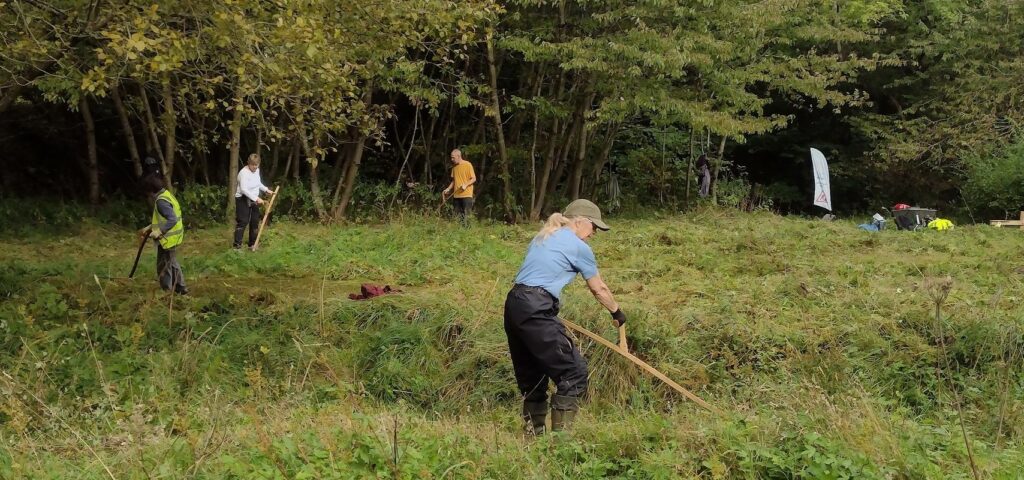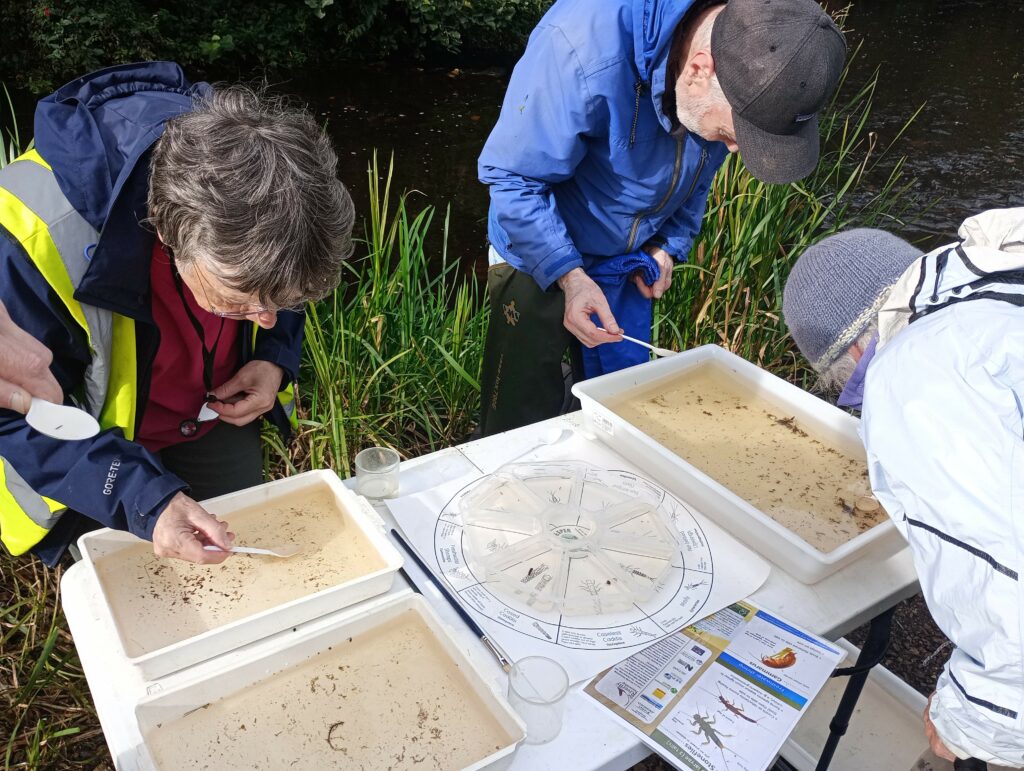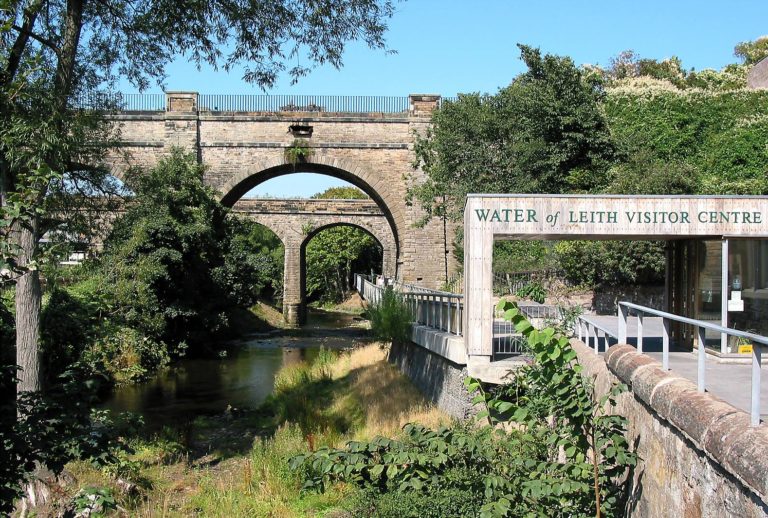Well after a weekend of rain it’s probably safe to say that Autumn has arrived and opportunities to wade in the river for rubbish will become more sporadic instead of the norm. Thus, it’s a good time to pause for a moment to update you on what we’ve achieved over the summer months. Over all we have delivered 132 task and over 4000 hours. There has been an increase in the number of sessions since July as Hannah and Michael have worked through their initial phases with the Trust and have started to lead their own projects without Johnny. As the colder months begin to arrive so does the drop off on corporate teams coming out and the chance to earn unrestricted funds to help cover staffing costs.
Walkway
The walkway resurfacing is now complete between Lanark Road and Balerno and was officially opened by Patrick Harvie at a recent event. The contractors reckon that there should be no need to rake leaves off it because of the improved drainage. As they provide a 12-month guarantee on their work the council are keen to see it that works. Thus, upstream we’ll just be focusing on cutting back and opening drainage channels instead of the regular slog of leaf sweeping. For all those that love leaf sweeping don’t worry there is still plenty to do on the downstream sections although I have requested road sweepers at Leith and Stockbridge to speed up the process.

Scything
Every day is a school day and having attend the scything festival this year and learning how to properly peen (the process of stretching the scythe blade to achieve a thin edge that can be sharpening). Mixed with the enthusiasm of the scything team to do it, this year’s cut has been a huge success taking a lot less effect than previous years and allowing us to add a couple of extra meadows to our work. We’ve still got a couple of small meadows left at Balerno and Anderson Place, but the big ones have all been cut and raked preparing the ground for more wildflowers next year.

If all goes well, I’m looking to run a beginner’s scything course at the start of November and March for all those interested in giving it a go.
SurveyTastic
For the last four years, volunteers have been steadily collecting data of each of our wildflower meadows. Showing what species, we have in each of our meadows and if biodiversity is increasing or decreasing year on year. More details see in the Meadow Article.
This year we’ve also added studying of the invertebrates in the river to our list as part of Buglife’s Guardians of the river program. This will help us discover more about the health of the river rivers and provide an early warning system that will highlight water quality issues. We’ve selected four sites along the river at Balerno, Longstone, Murrayfield and Redbraes to give us the best range of environments and will be surveying these each season.
Invasive Species
This year we targeted the main hotspot of Murrayfield over and over again both for Giant Hogweed and balsam. As the main flood plain of the river seeds regularly get washed there from the tributaries so I’m hoping we’ll see a decline next year. To date this year, we’ve done 155 hours of Giant Hogweed treatment along the river and as the data point shows after eight years it’s really making a difference upstream, as we’ve only been treating the downstream section for two there are many years to go.

Tributaries
For the third year in a row we’ve been working on the Murrayburn treating Giant Hogweed and now that’s been significantly reduced we’ve felt it was safe to bring volunteers in to begin to remove rubbish. We’ve had three sessions on the Longstone stretch and two on the Hermiston Gate each producing waste galore that I’m sure now removed will help nature heal a little on this tributary.

In addition, we’ve started pulling Himalayan Balsam on the Cockburn having received a tip off from the Pentlands Ranger service about a possible seed source. After two sessions we’ve hopefully removed the source and this year’s growth to reduce seeds coming into the Water of Leith but we’ll be back next year.
Long term we’d like to get into these tributaries more to reduce invasive species, increase tree cover and biodiversity to benefit the Water of Leith



